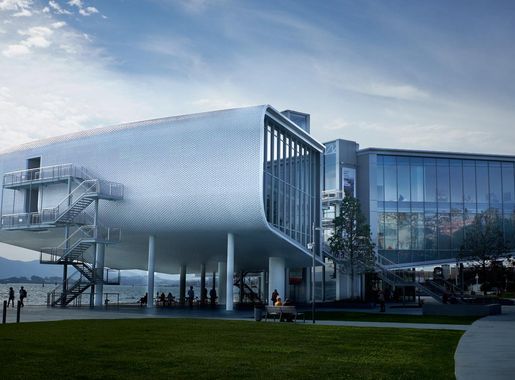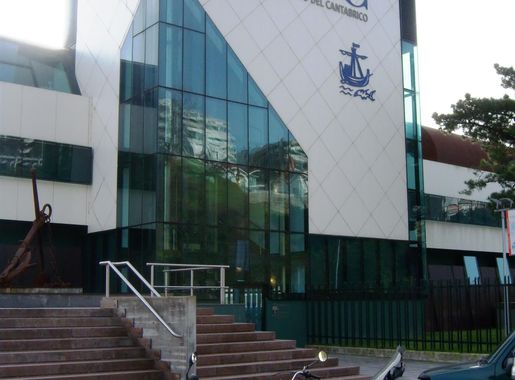
Santander: The Jewel of Spain's Northern Coast
Discover Santander: A blend of stunning beaches, rich maritime history, and vibrant culture on Spain's picturesque northern coast.
Santander, the capital of the Cantabria region in northern Spain, is a city of stunning natural beauty and rich cultural heritage. Nestled between the Bay of Biscay and lush green hills, Santander offers a unique mix of urban attractions and outdoor adventures. The city boasts splendid beaches, such as El Sardinero, where visitors can enjoy the golden sands and clear waters of the Atlantic Ocean. Strolling along the waterfront promenade, you will encounter magnificent views of the bay and charming seafood eateries offering the freshest catch of the day. Santander's history is deeply rooted in its maritime past, which is evident in its architectural landmarks and museums. The Palacio de la Magdalena, once the summer residence of Spanish royalty, stands majestically on the Magdalena Peninsula and provides panoramic views of the sea. History enthusiasts will appreciate the Maritime Museum of Cantabria, which showcases the region's seafaring legacy through fascinating exhibits. As you explore the city's historic quarter, you will find beautiful churches, such as the Catedral de Santander, and vibrant plazas brimming with local life. For nature lovers, Santander is a gateway to the breathtaking landscapes of Cantabria. A short drive from the city will take you to the scenic Picos de Europa National Park, where you can hike, climb, or simply soak in the stunning mountain scenery. The city itself is dotted with green spaces, including the picturesque Parque de Mataleñas, which offers lovely walking trails and a serene golf course. Whether you are keen on cultural exploration, seaside relaxation, or outdoor activities, Santander promises a memorable experience for every traveler.
Local tips in Santander
- Visit El Sardinero beach early in the morning to avoid crowds and enjoy a peaceful sunrise.
- Take a guided tour of the Palacio de la Magdalena to learn about its royal heritage and enjoy its stunning views.
- Try the local seafood dishes, especially the famous rabas (fried calamari) at one of the waterfront restaurants.
- Explore the Mercado de la Esperanza for fresh local produce and a taste of regional flavors.
- Use public transport or rent a bike to explore the city conveniently and sustainably.
Santander: The Jewel of Spain's Northern Coast
Santander, the capital of the Cantabria region in northern Spain, is a city of stunning natural beauty and rich cultural heritage. Nestled between the Bay of Biscay and lush green hills, Santander offers a unique mix of urban attractions and outdoor adventures. The city boasts splendid beaches, such as El Sardinero, where visitors can enjoy the golden sands and clear waters of the Atlantic Ocean. Strolling along the waterfront promenade, you will encounter magnificent views of the bay and charming seafood eateries offering the freshest catch of the day. Santander's history is deeply rooted in its maritime past, which is evident in its architectural landmarks and museums. The Palacio de la Magdalena, once the summer residence of Spanish royalty, stands majestically on the Magdalena Peninsula and provides panoramic views of the sea. History enthusiasts will appreciate the Maritime Museum of Cantabria, which showcases the region's seafaring legacy through fascinating exhibits. As you explore the city's historic quarter, you will find beautiful churches, such as the Catedral de Santander, and vibrant plazas brimming with local life. For nature lovers, Santander is a gateway to the breathtaking landscapes of Cantabria. A short drive from the city will take you to the scenic Picos de Europa National Park, where you can hike, climb, or simply soak in the stunning mountain scenery. The city itself is dotted with green spaces, including the picturesque Parque de Mataleñas, which offers lovely walking trails and a serene golf course. Whether you are keen on cultural exploration, seaside relaxation, or outdoor activities, Santander promises a memorable experience for every traveler.
When is the best time to go to Santander?
Iconic landmarks you can’t miss
Palacio de la Magdalena
Explore the historical elegance of Palacio de la Magdalena, a stunning landmark in Santander with breathtaking coastal views and rich cultural heritage.
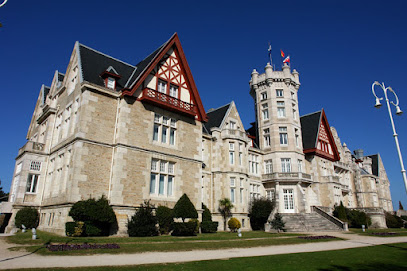
Centro Botín
Experience the vibrant fusion of contemporary art and stunning coastal views at Centro Botín, Santander's premier art museum.
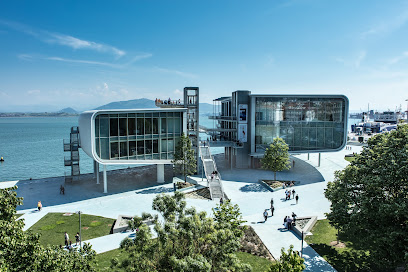
Museo Marítimo del Cantábrico
Explore the maritime heritage of the Cantabrian Sea at Museo Marítimo del Cantábrico, an engaging museum in Santander featuring fascinating exhibits and breathtaking views.
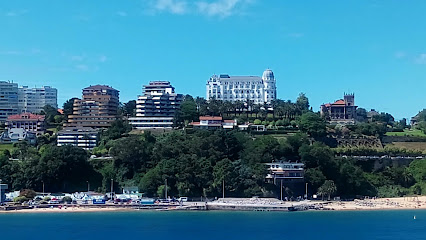
Mercado del Este
Discover the flavors and crafts of Cantabria at Mercado del Este, Santander's lively market filled with local delicacies and artisanal treasures.

Centro de Arte Faro Cabo Mayor
Explore the Centro de Arte Faro Cabo Mayor, a stunning museum blending contemporary art with breathtaking coastal scenery in Santander, Spain.
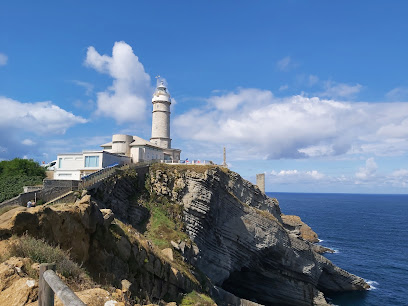
Catedral de Santander
Discover the stunning beauty and rich history of the Catedral de Santander, a must-visit landmark in Cantabria, Spain.
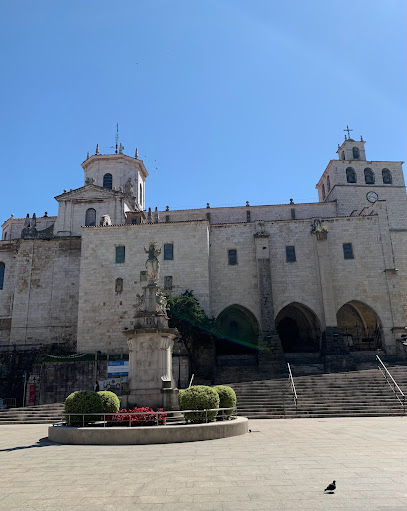
Primera Playa del Sardinero
Explore the beauty and vibrancy of Primera Playa del Sardinero, a must-visit public beach in Santander, offering sun, surf, and stunning views.
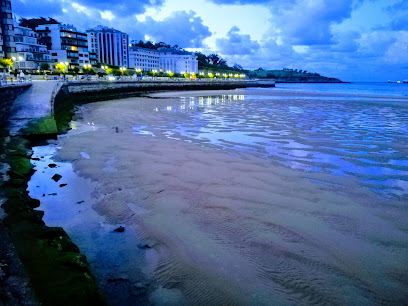
Plaza Porticada (plaza de Velarde)
Discover the vibrant heart of Santander at Plaza Porticada, a historical landmark perfect for leisure and cultural experiences in Cantabria.
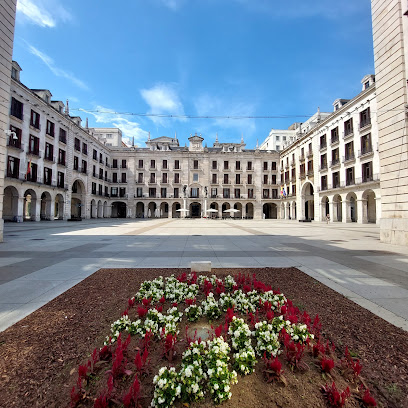
Parque de Mataleñas
Explore the serene beauty of Parque de Mataleñas, a picturesque park in Santander, Cantabria, perfect for relaxation and outdoor activities.
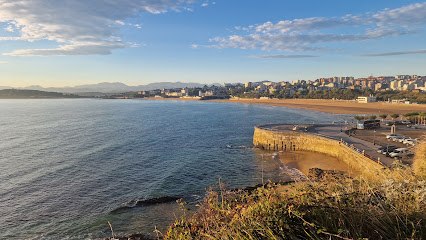
Los Raqueros
Explore Los Raqueros in Santander, a stunning sculpture celebrating the city's maritime culture, ideal for tourists seeking art, history, and beautiful harbor views.
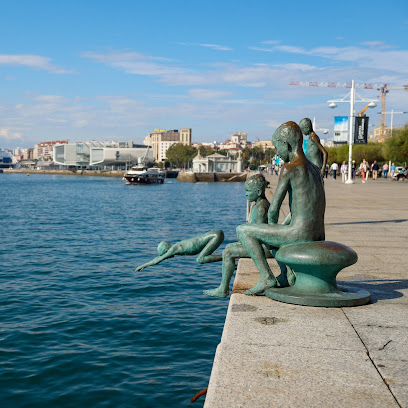
Los Reginas Santander
Discover the breathtaking Cantabrian coastline with Los Reginas, Santander's premier boat tour agency offering unforgettable maritime experiences.
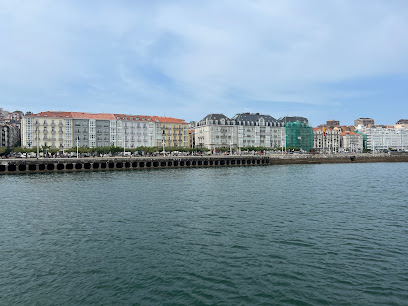
Jardines de Piquío
Explore the lush landscapes and stunning coastal views at Jardines de Piquío, a serene garden oasis in Santander that captivates every visitor.
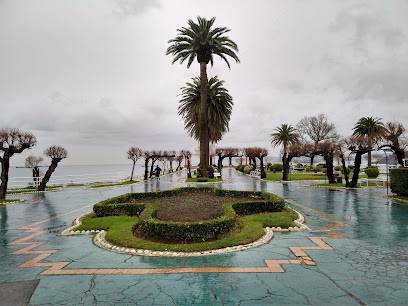
Plaza de Pombo
Discover Plaza de Pombo, Santander's lively square filled with cafes, culture, and a vibrant atmosphere perfect for relaxing and exploring.
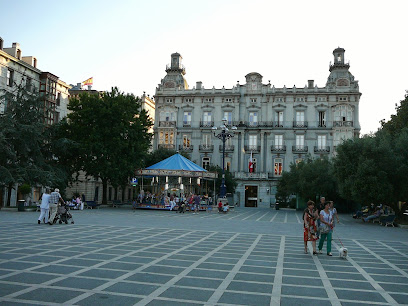
Playa de Mataleñas
Experience the breathtaking beauty of Playa de Mataleñas, a serene beach in Santander, Cantabria, perfect for relaxation and adventure.
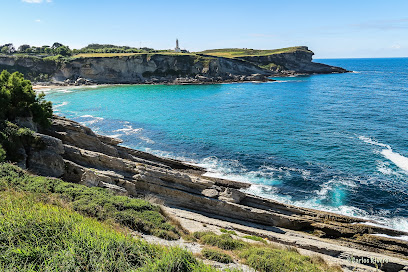
Museum of Prehistory and Archaeology of Cantabria
Explore Cantabria's ancient past at the Museum of Prehistory and Archaeology, a treasure trove of artifacts and exhibits waiting to be discovered.
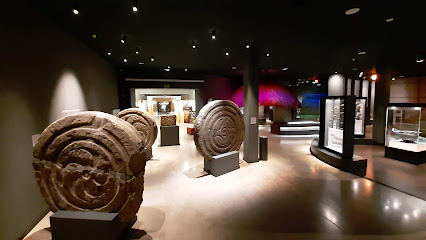
Unmissable attractions to see
El Capricho de Gaudí
Explore El Capricho de Gaudí, a stunning architectural gem in Comillas, blending nature and art, and a must-see for every traveler in Cantabria.

Cave of Altamira
Discover the prehistoric artistry of the Cave of Altamira in Santillana del Mar, a UNESCO World Heritage site showcasing ancient cave paintings and rich history.
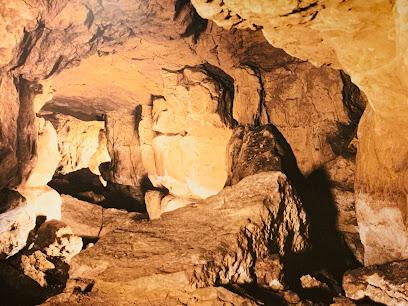
Centro Botín
Experience contemporary art and stunning views at Centro Botín, Santander's premier modern art museum, where creativity meets the sea.
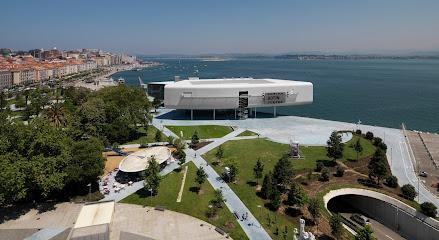
Museo Marítimo del Cantábrico
Discover the rich maritime heritage of Santander at the Museo Marítimo del Cantábrico, a captivating journey through history and marine life.
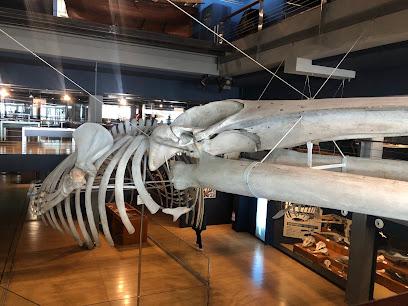
Catedral de Santander
Explore the stunning Catedral de Santander, a historical masterpiece blending Gothic and Neoclassical architecture in the heart of Cantabria.
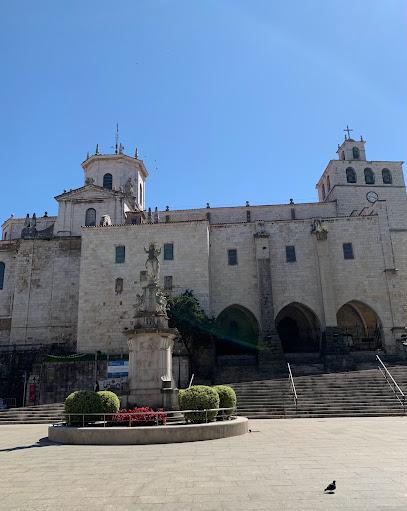
Castillo del Rey
Explore Castillo del Rey in San Vicente de la Barquera, a stunning medieval castle with breathtaking views and rich history in beautiful Cantabria.
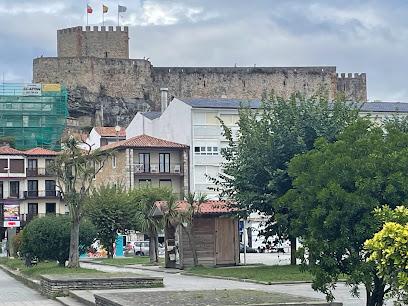
Primera Playa del Sardinero
Experience the allure of Primera Playa del Sardinero in Santander, a stunning public beach perfect for relaxation, water sports, and savoring local cuisine.
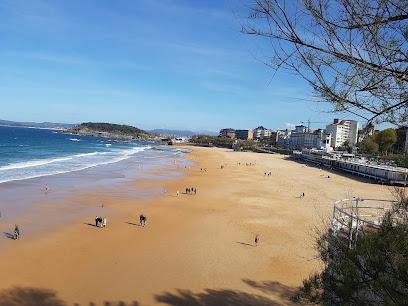
Playa De Somo
Experience the captivating beauty and vibrant atmosphere of Playa De Somo, a must-visit beach destination in Cantabria, Spain.
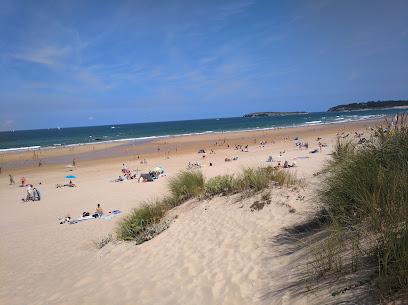
Centro de Arte Faro Cabo Mayor
Experience the perfect blend of art and nature at Centro de Arte Faro Cabo Mayor in Santander, a must-visit for cultural enthusiasts and nature lovers alike.
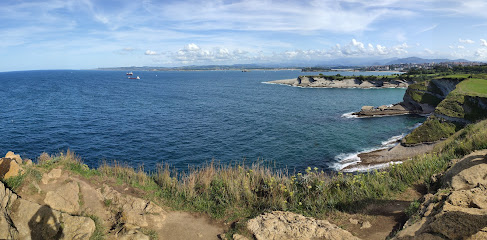
Santillana Zoo
Explore Santillana Zoo - a delightful animal park in Cantabria, combining wildlife encounters with family fun and educational experiences.

Parque de Mataleñas
Experience the natural beauty and stunning coastal views at Parque de Mataleñas, an essential stop for tourists in Santander.
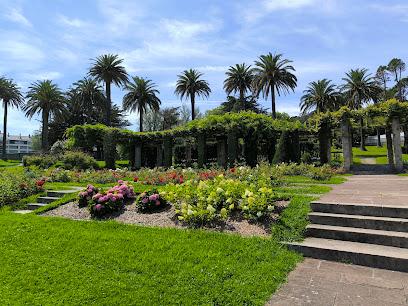
Cave of El Castillo
Discover the Cave of El Castillo, a UNESCO site in Cantabria, showcasing the oldest cave paintings and rich prehistoric history in a stunning natural setting.

Los Raqueros
Explore Los Raqueros in Santander, a stunning sculpture celebrating the city's seafaring heritage, offering breathtaking views and rich cultural experiences.
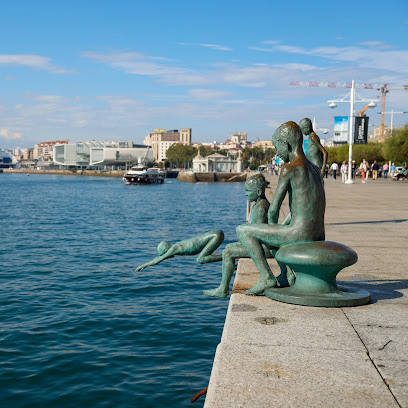
Jardines de Piquío
Explore the lush landscapes and stunning sea views at Jardines de Piquío, a serene garden escape in the heart of Santander, Cantabria.
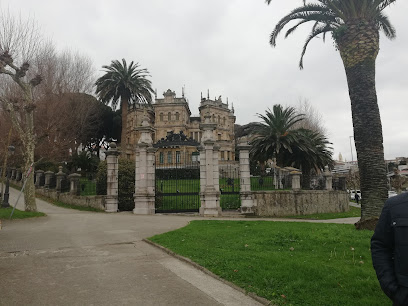
Puerto Santoña
Discover Puerto Santoña, a serene marina in Cantabria, where coastal beauty meets rich maritime culture for an unforgettable experience.
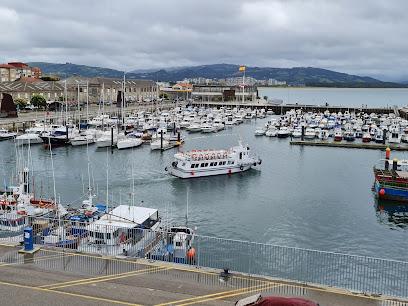
Essential places to dine
Casa Lita
Discover authentic Spanish flavors at Casa Lita, Santander's premier tapas bar offering delightful dishes and stunning waterfront views.

Cañadío
Discover authentic Cantabrian flavors at Cañadío in Santander - where tradition meets culinary excellence.
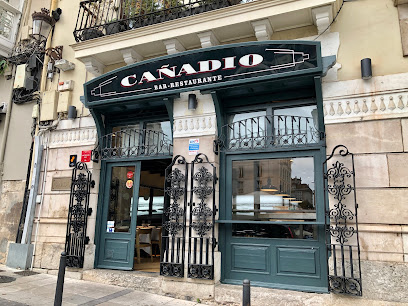
Restaurante Los Peñucas
Discover exquisite seafood at Restaurante Los Peñucas in Santander - where fresh flavors meet stunning coastal views.
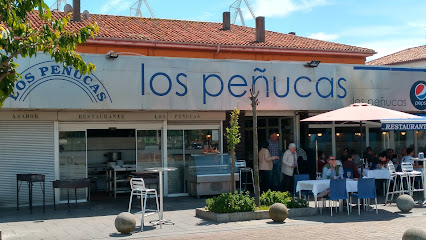
Bodega del Riojano
Discover the flavors of Spain at Bodega del Riojano in Santander—where tradition meets taste in a vibrant dining experience.
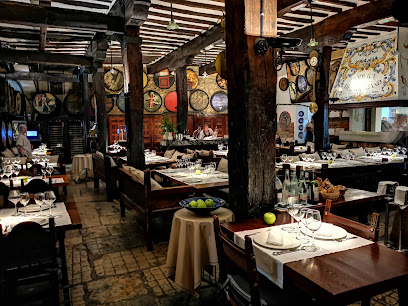
Taberna La Prensa Restaurante
Discover fresh seafood delights at Taberna La Prensa in Santander – where every dish tells a story of Cantabrian tradition.
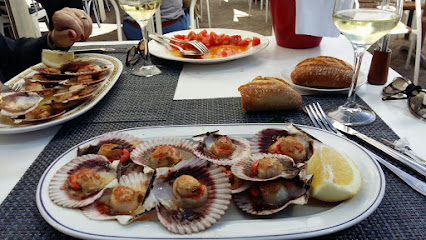
Marisqueria Casa Jose
Experience authentic Cantabrian seafood at Marisqueria Casa Jose in Santander—fresh catches served in a vibrant setting.
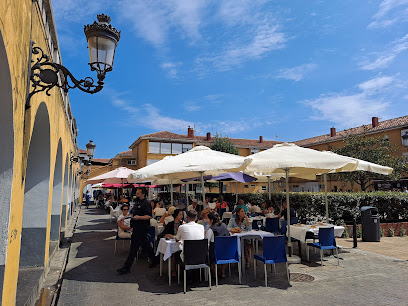
Bodega Fuente Dé
Discover authentic Cantabrian cuisine at Bodega Fuente Dé in Santander - a must-visit for food enthusiasts seeking delightful flavors.
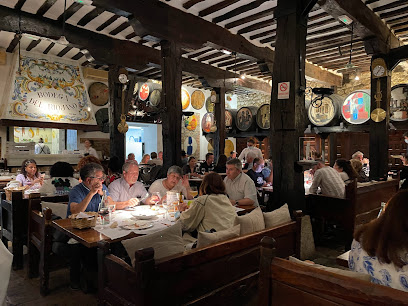
Taberna La Radio
Experience the best seafood dining in Santander at Taberna La Radio – where freshness meets tradition in every bite.
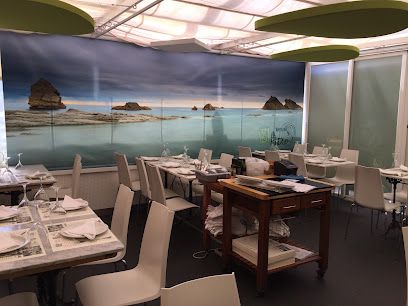
Restaurante La Ventana
Experience exquisite grill cuisine at Restaurante La Ventana in Santander - where local flavors meet inviting ambiance.
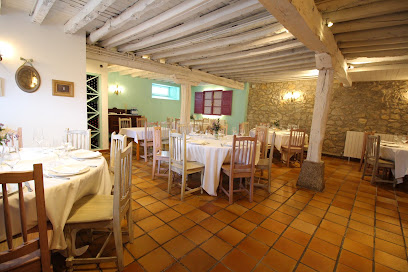
Restaurante La Cañía
Experience authentic Cantabrian cuisine at Restaurante La Cañía, where traditional flavors meet modern dining in the heart of Santander.
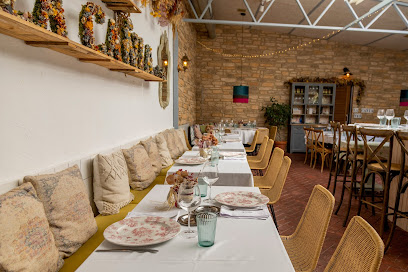
Restaurante La Candelita
Experience authentic Mediterranean and Spanish cuisine at Restaurante La Candelita in Santander, where every meal is a celebration of flavor.
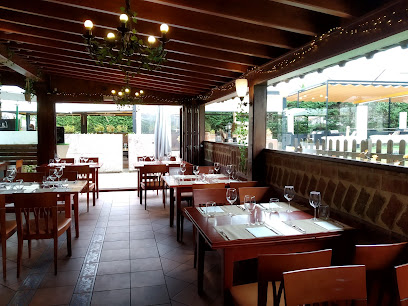
Restaurante Marucho
Savor authentic seafood delights at Restaurante Marucho in Santander - where traditional Spanish flavors meet fresh coastal cuisine.
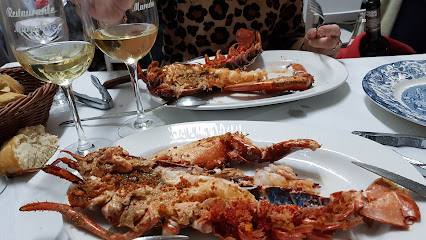
La Bombi
Experience the taste of Cantabria at La Bombi – a premier seafood restaurant offering authentic Spanish dishes in a vibrant setting.
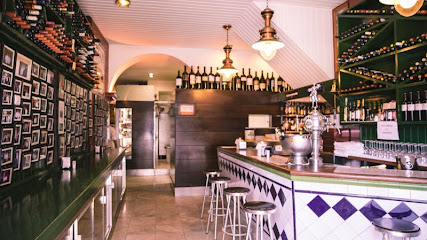
Restaurante El Serbal
Discover the essence of Mediterranean flavors at Restaurante El Serbal in Santander—where fine dining meets exceptional service.
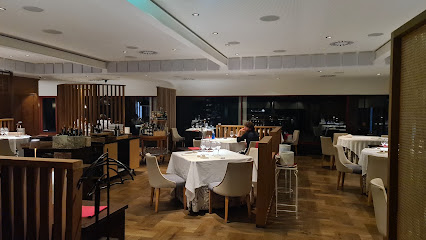
Restaurante la Casa del Indiano
Experience authentic Cantabrian cuisine at Restaurante la Casa del Indiano in Santander – a culinary delight for every food lover.
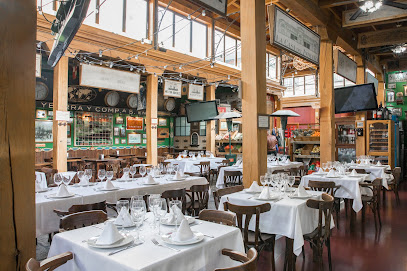
Markets, malls and hidden boutiques
El Corte Inglés Santander
Discover a world of shopping, dining, and entertainment at El Corte Inglés Santander, the ultimate destination for tourists in Cantabria.
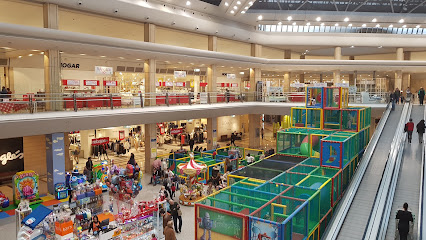
Centro Comercial Bahía de Santander
Explore the Centro Comercial Bahía de Santander: your go-to shopping destination in Cantabria with diverse shops, cozy cafes, and a lively atmosphere.
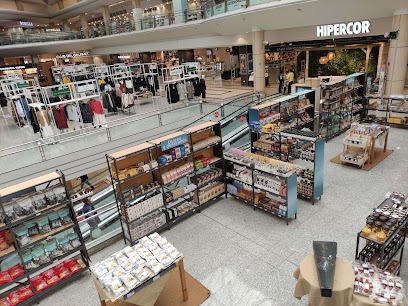
Lush Cosmetics Santander
Experience the essence of natural beauty at Lush Cosmetics Santander, where handmade products meet ethical luxury.
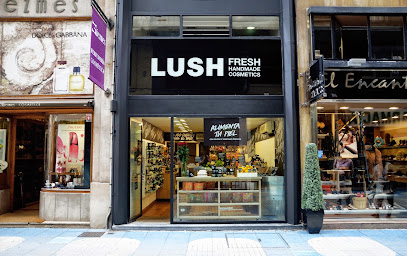
Tiger
Discover a world of unique gifts and creative supplies at Tiger Gift Shop in Santander, the perfect stop for souvenirs and home goods.
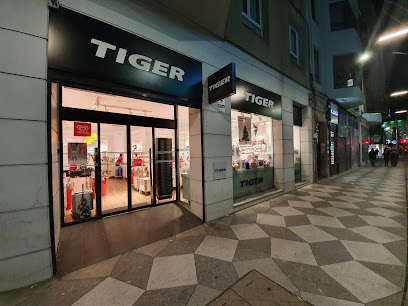
Distrito Zero
Explore Distrito Zero in Santander for an unforgettable trading card experience, where collectors and enthusiasts unite in a vibrant atmosphere of cards and camaraderie.
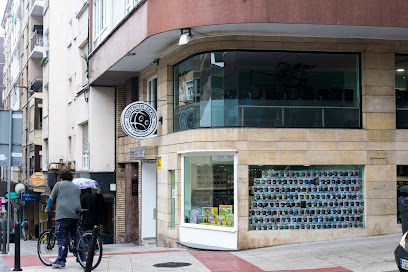
KOOPERA STORE SANTANDER
Explore sustainable shopping at Koopera Store Santander, where every piece tells a story and eco-friendly fashion thrives.
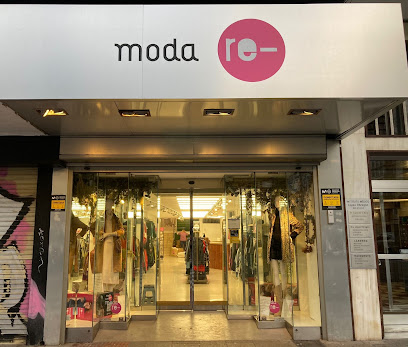
Tiendas Tipo
Explore Tiendas Tipo in Santander for an unforgettable journey through vinyl records, diverse genres, and a vibrant music community.
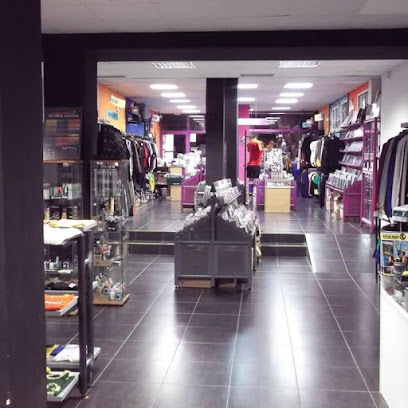
La Barata Santander
Experience the vibrant fashion scene at La Barata in Santander, where trendy clothing meets exceptional style and affordability.
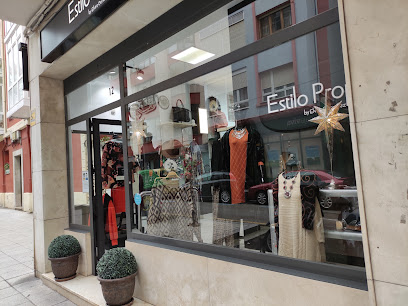
Buenahierba shop Santander
Discover the vibrant cannabis culture at Buenahierba Shop in Santander, Spain, offering quality products and expert guidance for all enthusiasts.
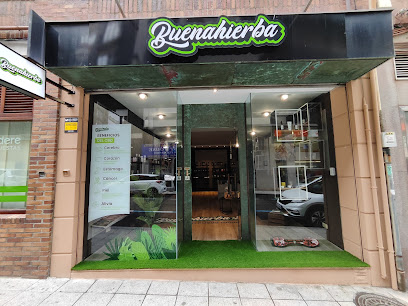
Unique Vintage Home
Explore Unique Vintage Home in Santander, where timeless elegance meets modern living with a curated selection of vintage-inspired home goods.

Bazar Volveras
Discover Bazar Volveras in Santander, where unique gifts and local crafts await to enrich your travel experience in Cantabria.
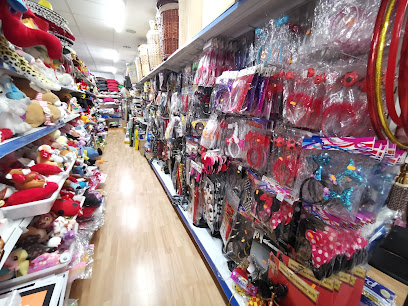
Natura Santander
Discover unique gifts and stylish clothing at Natura Santander, a must-visit shop in the heart of Cantabria filled with local charm.
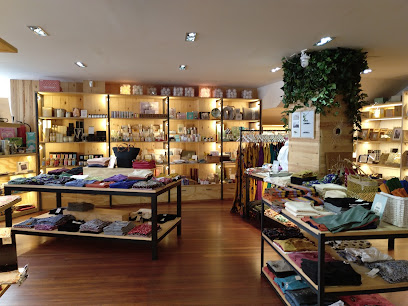
Regalos Michel
Discover unique souvenirs and local crafts at Regalos Michel, Santander's charming gift shop filled with treasures from Cantabria.
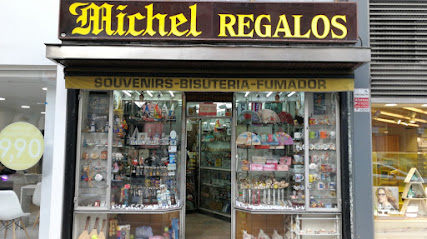
Viarce Santander
Explore Viarce Santander for unique gifts and home decor that capture the essence of Cantabria's artistry and charm.
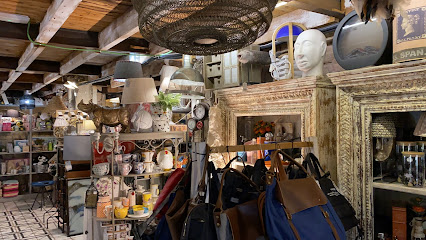
TIME ROAD - Relojería y Joyería - Santander
Explore TIME ROAD in Santander for exquisite jewelry and watches, capturing the essence of local craftsmanship and a perfect souvenir of your travels.
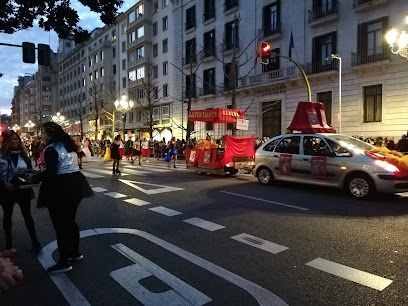
Essential bars & hidden hideouts
Casa Lita
Experience the vibrant flavors of Spain at Casa Lita, Santander's premier tapas bar, where every dish tells a story.
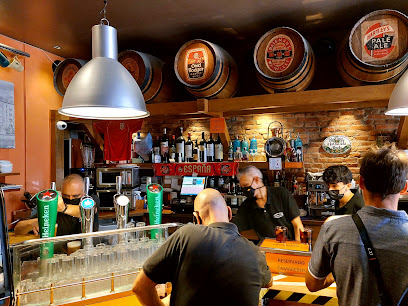
Little Bobby
Experience the vibrant nightlife of Santander at Little Bobby, your go-to pub and cocktail bar for unforgettable drinks and a welcoming atmosphere.
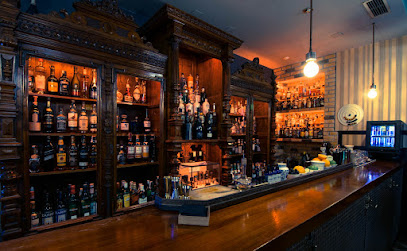
Grog
Discover Grog, Santander's lively cocktail bar, offering innovative drinks and a vibrant atmosphere for an unforgettable night out.
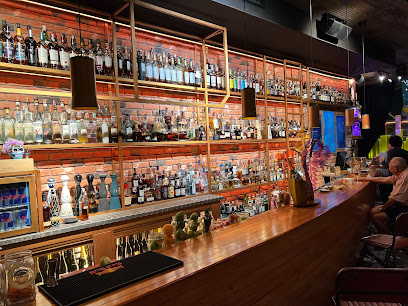
King´s Pub
Discover the lively ambiance and expertly crafted cocktails at King’s Pub, a must-visit cocktail bar in Santander, Cantabria.
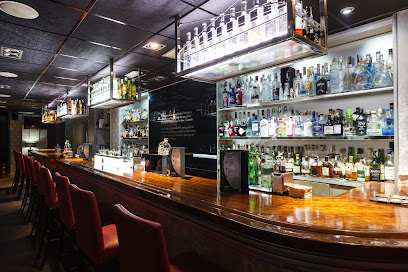
TriBeCa Bar&Lunch
Discover the vibrant flavors of Santander at TriBeCa Bar&Lunch, where delicious food and a lively atmosphere await every visitor.
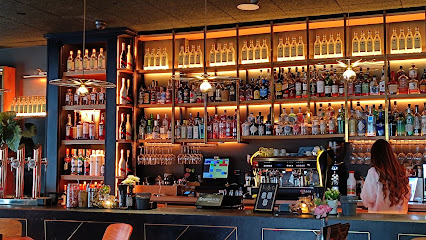
Clandestine Gin & Soul
Experience the lively ambiance and exquisite cocktails at Clandestine Gin & Soul, Santander's premier gin pub for nightlife enthusiasts.

Pub,el Nido Del Cuco
Discover the vibrant nightlife of Santander at Pub, el Nido Del Cuco, where local flavors and a lively atmosphere await.
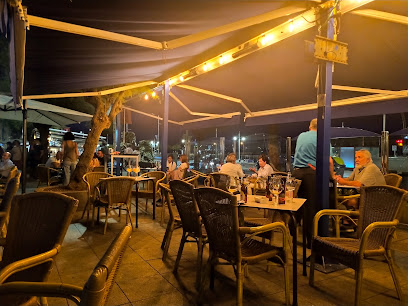
Bar Canela
Discover the vibrant nightlife at Bar Canela, Santander's go-to bar for cocktails and local brews in a lively atmosphere.
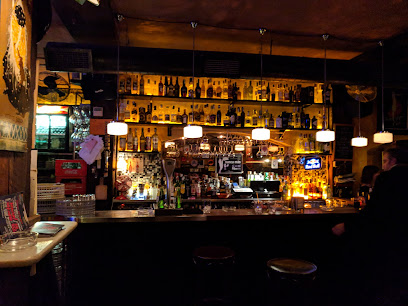
HYGGE COCKTAIL
Experience the cozy charm of Hygge Cocktail in Santander, where expertly crafted cocktails meet a warm and inviting atmosphere.
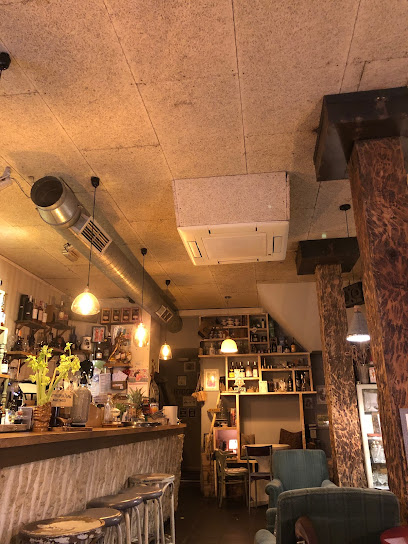
Malaspina - Santander, Cantabria
Explore the vibrant nightlife of Santander at Malaspina, a popular pub known for its lively atmosphere, diverse drinks, and local music events.
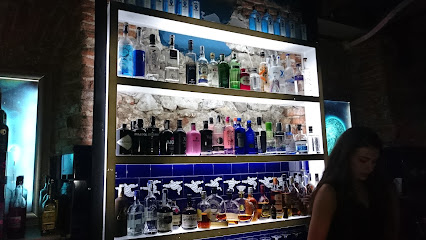
La Floridita
Experience the vibrant nightlife of Santander at La Floridita, a cocktail bar known for its exquisite drinks and lively atmosphere.
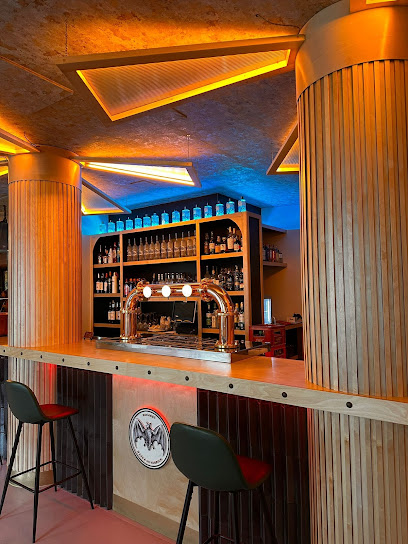
Pub La Buhardilla
Discover the vibrant nightlife at Pub La Buhardilla in Santander, where rock music and social vibes create an unforgettable experience for all.
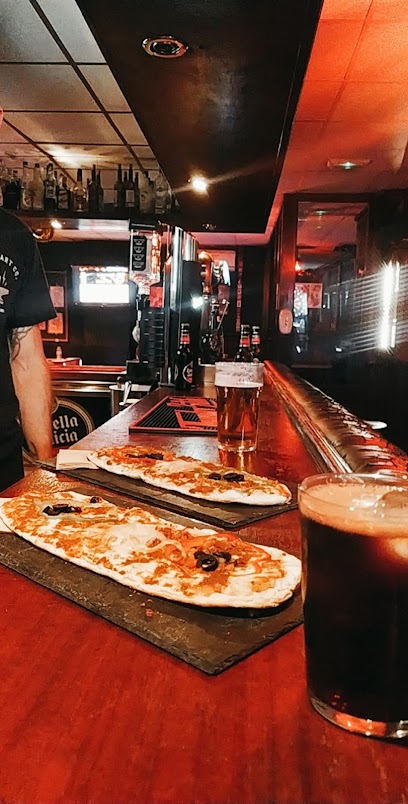
El Mono que Chilla
Experience vibrant nightlife at El Mono que Chilla, Santander's charming bar offering affordable drinks and a lively atmosphere.
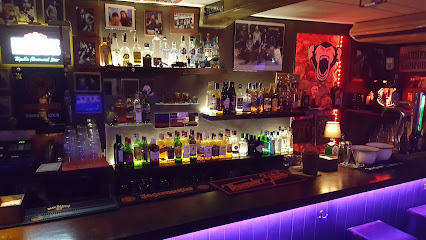
PUB BENDER
Discover the energetic nightlife of Santander at PUB BENDER, a lively bar offering affordable drinks and a welcoming atmosphere for all.
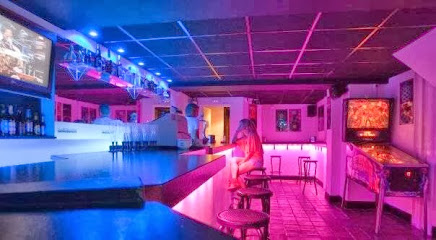
Bar Cuadros
Discover the vibrant nightlife of Santander at Bar Cuadros, where locals and tourists mingle over affordable drinks and warm hospitality.
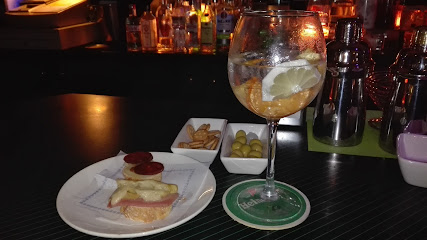
Local Phrases
-
- HelloHola
[O-la] - GoodbyeAdiós
[Ah-dyos] - YesSí
[See] - NoNo
[No] - Please/You're welcomePor favor/De nada
[Por fa-vor/De na-da] - Thank youGracias
[Gra-thyas] - Excuse me/SorryPerdón/Lo siento
[Per-don/Lo syen-to] - How are you?¿Cómo estás?
[Ko-mo es-tas] - Fine. And you?Bien. ¿Y tú?
[Byen. Ee too] - Do you speak English?¿Hablas inglés?
[A-blas in-gles] - I don't understandNo entiendo
[No en-tyen-do]
- HelloHola
-
- I'd like to see the menu, pleaseMe gustaría ver la carta, por favor
[Me goos-ta-ree-a ver la kar-ta, por fa-vor] - I don't eat meatNo como carne
[No ko-mo kar-ne] - Cheers!¡Salud!
[Sah-lood] - I would like to pay, pleaseMe gustaría pagar, por favor
[Me goos-ta-ree-a pa-gar, por fa-vor]
- I'd like to see the menu, pleaseMe gustaría ver la carta, por favor
-
- Help!¡Ayuda!
[Ah-yu-da] - Go away!¡Vete!
[Ve-te] - Call the Police!¡Llama a la Policía!
[Ya-ma a la Po-li-thya] - Call a doctor!¡Llama a un médico!
[Ya-ma a un me-di-ko] - I'm lostEstoy perdido/a
[Es-toy per-di-do/a] - I'm illEstoy enfermo/a
[Es-toy en-fer-mo/a]
- Help!¡Ayuda!
-
- I'd like to buy...Me gustaría comprar...
[Me goos-ta-ree-a kom-prar] - I'm just lookingSolo estoy mirando
[So-lo es-toy mee-ran-do] - How much is it?¿Cuánto cuesta?
[Kwan-to kwe-sta] - That's too expensiveEsto es demasiado caro
[Es-to es de-ma-sya-do ka-ro] - Can you lower the price?¿Puede bajar el precio?
[Pwe-de ba-har el pre-thyo]
- I'd like to buy...Me gustaría comprar...
-
- What time is it?¿Qué hora es?
[Ke o-ra es] - It's one o'clockEs la una
[Es la u-na] - Half past (10)Las diez y media
[Las dyeth e me-dya] - MorningMañana
[Ma-nya-na] - AfternoonTarde
[Tar-de] - EveningNoche
[No-che] - YesterdayAyer
[A-yer] - TodayHoy
[Oy] - TomorrowMañana
[Ma-nya-na] - 1Uno
[Oo-no] - 2Dos
[Dos] - 3Tres
[Tres] - 4Cuatro
[Kwa-tro] - 5Cinco
[Thin-ko] - 6Seis
[Sayz] - 7Siete
[Syet-te] - 8Ocho
[O-cho] - 9Nueve
[Nwe-ve] - 10Diez
[Dyeth]
- What time is it?¿Qué hora es?
-
- Where's a/the...?¿Dónde está...?
[Don-de es-ta] - What's the address?¿Cuál es la dirección?
[Kwal es la di-rek-thyon] - Can you show me (on the map)?¿Puedes enseñarme (en el mapa)?
[Pwe-des en-nya-rme (en el ma-pa)] - When's the next (bus)?¿Cuándo es el próximo (autobús)?
[Kwan-do es el pro-ksee-mo (au-to-bus)] - A ticket (to ....)Un billete (a ....)
[Un bi-yet-te (a)]
- Where's a/the...?¿Dónde está...?
History of Santander
-
The history of Santander can be traced back to its ancient origins, with evidence of prehistoric settlements in the area. However, it was during Roman times that the city began to gain prominence. Known as Portus Victoriae Iuliobrigensium, Santander served as a vital port for the Romans, facilitating trade and military logistics.
-
During the medieval period, Santander's significance grew with the establishment of the Abbey of the Holy Bodies (San Emeterio and San Celedonio) in the 8th century. The abbey became a religious and cultural center, attracting pilgrims and contributing to the city's development. This period also saw the construction of the St. James Church, now the Santander Cathedral.
-
In the 12th century, Santander became part of the Crown of Castile. King Alfonso VIII granted the city a royal charter in 1187, which allowed it to hold markets and fairs, boosting its economy. The city's strategic location made it an important port for the Castilian kingdom, facilitating trade with northern Europe and the Mediterranean.
-
Santander played a crucial role during the Age of Exploration in the 15th and 16th centuries. The city's port became a departure point for many expeditions to the New World. Notably, the famous explorer Juan de la Cosa, who created the first world map to include the Americas, was born in the nearby town of Santoña and frequently sailed from Santander.
-
The 18th and 19th centuries marked a period of prosperity for Santander. The city's economy flourished due to its involvement in the shipping and fishing industries. The establishment of the Royal Maritime Company of Santander in 1785 and the construction of the port's modern infrastructure further boosted its economic growth. The city's population expanded, and its urban landscape began to transform.
-
One of the most significant events in Santander's modern history is the Great Fire of 1941. The fire broke out on February 15th and raged for two days, devastating the city's historic center. Over 400 buildings were destroyed, and thousands of residents were left homeless. The reconstruction of Santander in the following decades reshaped the city's architecture and urban layout.
-
In recent decades, Santander has evolved into a cultural and economic hub in northern Spain. The city is known for its vibrant cultural scene, with institutions like the Palacio de Festivales and the Centro Botín hosting numerous events and exhibitions. Santander's economy is bolstered by its port activities, tourism, and services sector, making it a dynamic and thriving city.
Santander Essentials
-
Santander is accessible by various means. The Santander Airport (Seve Ballesteros-Santander Airport) offers flights from major Spanish cities and some international destinations. For those traveling by train, the RENFE network connects Santander with cities like Madrid and Bilbao. Bus services by ALSA also provide connections to several Spanish cities. Additionally, Santander is a port city with ferry services from the UK (Plymouth and Portsmouth) operated by Brittany Ferries.
-
Santander has a well-organized public transportation system. The city buses, operated by TUS, cover most areas of the city and are a convenient way to get around. Taxis are readily available and can be hailed on the street or booked via phone or app. Renting a car is another option for those wanting to explore the surrounding Cantabria region. The city also has a bike-sharing program called TUSBIC which is ideal for short trips within the city.
-
The official currency in Santander is the Euro (€). Credit and debit cards are widely accepted in hotels, restaurants, and shops. However, it is advisable to carry some cash, especially for smaller establishments and markets. ATMs are widely available throughout the city, and you can withdraw cash using international cards.
-
Santander is generally a safe city for tourists. However, as with any destination, it is important to take standard precautions. Avoid poorly-lit areas at night and be cautious with your belongings in crowded places to prevent pickpocketing. Areas such as the train station and certain parts of the waterfront can be more prone to petty crime, so remain vigilant.
-
In case of emergency, dial 112 for immediate assistance. This number connects you to emergency services including police, fire, and medical help. The main hospital in Santander is Hospital Universitario Marqués de Valdecilla. Pharmacies are available for minor health concerns, and many have a green cross sign indicating 24-hour service.
-
Fashion: Do dress smartly, especially in the evenings when Spaniards tend to dress up. Avoid overly casual attire in upscale restaurants. Religion: Do respect local customs, especially when visiting churches. Dress modestly and remain quiet. Public Transport: Do let elderly people and those with disabilities get on and find a seat first. Don't eat or drink on buses. Greetings: Do greet people with a handshake. In social settings, a kiss on each cheek is common among friends and acquaintances. Eating & Drinking: Do try local delicacies such as sobaos and anchovies. Don't expect dinner before 8 PM, as Spaniards eat late.
-
To experience Santander like a local, visit the Mercado de la Esperanza for fresh produce and local specialties. Take a stroll along the Sardinero beach, popular among locals for its beauty. Don't miss the Magdalena Peninsula, which offers a mix of history, nature, and stunning views. For a true local experience, enjoy a 'paseo' (evening walk) along the waterfront and try some pinchos (small snacks) at local bars.
Trending Landmark in Santander
-
Palacio de la Magdalena
-
Centro Botín
-
Museo Marítimo del Cantábrico
-
Mercado del Este
-
Centro de Arte Faro Cabo Mayor
-
Catedral de Santander
-
Primera Playa del Sardinero
-
Plaza Porticada (plaza de Velarde)
-
Parque de Mataleñas
-
Los Raqueros
-
Los Reginas Santander
-
Jardines de Piquío
-
Plaza de Pombo
-
Playa de Mataleñas
-
Museum of Prehistory and Archaeology of Cantabria
Nearby Cities to Santander
-
Things To Do in Bilbao
-
Things To Do in Burgos
-
Things To Do in San Sebastián
-
Things To Do in Oviedo
-
Things To Do in Pamplona
-
Things To Do in Valladolid
-
Things To Do in Segovia
-
Things To Do in Bordeaux
-
Things To Do in Bragança
-
Things To Do in Lourdes
-
Things To Do in Zaragoza
-
Things To Do in Huesca
-
Things To Do in Salamanca
-
Things To Do in Avila
-
Things To Do in Madrid



